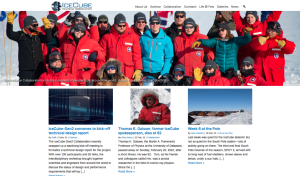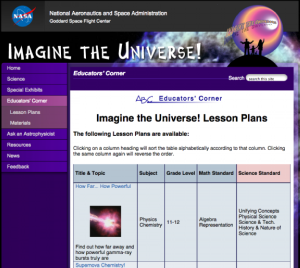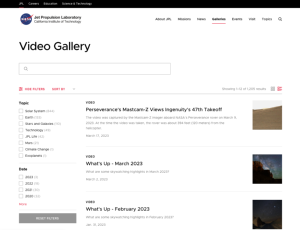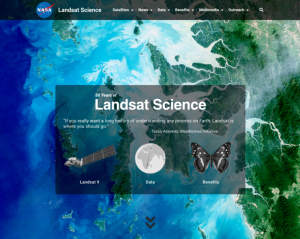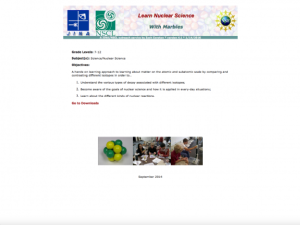Browse Resources
Engineering Technologies -- Space technologies
Resources | |
|---|---|
This website provides information about the University of Wisconsin-Madison's IceCube particle detector located at the South Pole. IceCube is the world's largest neutrino detector that searches for violent astrophysical events such as, "exploding stars, gamma-ray bursts, and other cataclysmic...
The Educators' Corner, from Imagine the Universe out of NASA's Goddard Space Flight Center, contains astronomy and space science lesson plans and resources for middle and high school students. Lesson plans cover the topics of frequency and wavelength, x-ray spectroscopy, supernova chemistry, and...
This interactive lesson from SpaceTEC's National Aerospace Technical Education Center presents an overview of the aerospace workplace. It includes videos discussing topics in the aerospace field including the history of rockets and space pioneers, the principles of rocketry and orbital dynamics,...
This video from SpaceTEC National Aerospace Technical Education Center explains the General Systems Model and how consider the entire system when performing aerospace work. This three and a half minute video is part of the aerospace certification readiness courses.
The Jet Propulsion Laboratory offers a variety of videos about the earth, solar system, stars and galaxies, and technology. Video titles include A Tresure Trove of Planets Found, Enceladus: Mystery of the Icy Moon, Spacecraft Power, Crazy Engineering: Flying Solar to Jupiter, and many more. Videos...
This website, from NASA's Jet Propulsion Laboratory, describes the activities of the Mobility and Robotic Systems Section, as well as related robotics efforts around the Jet Propulsion Laboratory. Flight projects, applications, and research tasks of the section are all detailed. There are also...
This is the U.S. National Aeronautics and Space Administration's launch page for all things related to Landsat science education. The Landsat program has been collecting spectral information of the earth's surface for over 40 years--the longest continual record of images of our planet. This website ...
This lesson plan and activity guide from The Joint Institute for Nuclear Astrophysics (JINA) and the National Superconducting Cyclotron Laboratory (NSCL) teaches students about matter on the atomic and subatomic scale. Learning objectives are included on this webpage with a link to the downloadable...
Created by the Stanford Solar Center, this collection of activities serve as guides for those interested in observing the sun. Information on building pinhole cameras, using telescopes, accessing an online solar telescope, observing eclipses, and sketching sunspots is included. Intended for K-12...
This video from SpaceTEC National Aerospace Technical Education Center explains the mechanics of orbital dynamics and Newton's First Law of Motion. This three minute video is one of the aerospace certification readiness courses.
| |
| ← Previous | Next → |
